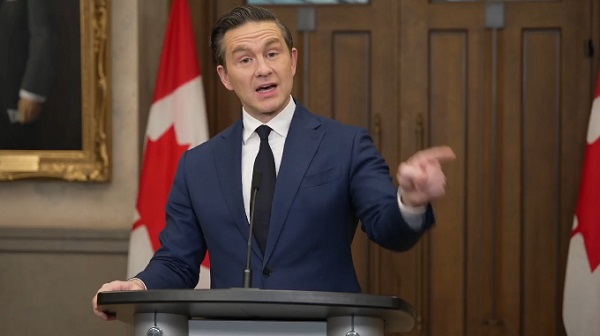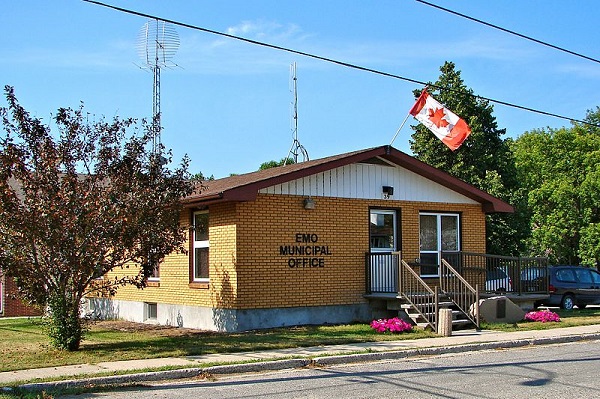National
When’s the election? Singh finally commits. Poilievre asks Governor General to step in

Canadians will be heading to the polls soon. The only question is when!
With Parliament wrapping up for the year, NDP Leader Jagmeet Singh has finally given in to the overwhelming public outcry for a federal election that will presumably punish Justin Trudeau and the Liberal Party for years of higher taxes and higher living expenses.
Presumably this would keep Trudeau in government until after Singh becomes eligible for his MP pension in late February.
Here’s the letter Singh published Friday to X with this short statement:
” Justin Trudeau failed in the biggest job a Prime Minister has: to work for people, not the powerful. The NDP will vote to bring this government down, and give Canadians a chance to vote for a government who will work for them. “

For Official Opposition Leader Pierre Poilievre the election can’t come soon enough. Today Poilievre presented his own letter to Canada’s Governor General asking her to step in and allow Canadians the chance to bring down this incredibly unpopular minority government. Poilievre also sent the letter to the leaders of the NDP and BQ.. urging them to send similar requests to the Governor General.


Poilievre then addressed the media, calling for an immediate election.
National
Canadian town appeals ruling that forces them to pay LGBT group over ‘pride’ flag dispute

From LifeSiteNews
The irony of the ruling is that Emo’s town hall doesn’t even have a flagpole
A Canadian town has announced it will seek a “judicial review” regarding a decision that saw it being mandated by a tribunal to pay an LGBT group thousands of dollars because it refused to cave to activists’ demands by declaring June “Pride Month” and flying the related rainbow flag.
In a media statement Thursday, the town of Emo, Ontario, said it has “decided to seek judicial review of the decision of the Human Rights Tribunal of Ontario. As the matter is proceeding to the Divisional Court, we will not be commenting further at this time.”
The town noted that it wished “to state that it made a Declaration of Equality in 2022, which remains in effect today.”
“The Township recognizes the dignity and worth of all people, as well as the barriers of discrimination and disadvantage faced by human rights protected groups, including members of the LGBTQ2+ community,” said the town in its 2022 declaration.

As reported by LifeSiteNews, last month Mayor Harold McQuaker of Emo, Ontario, was ordered by an Ontario Human Rights Tribunal to pay local LGBT activist group Borderland Pride $5,000 for refusing to celebrate the LGBT agenda during the month of June. The town was also ordered to pay $10,000.
Specifically, the mayor and town had refused to cave to demands to fly the LGBT “Pride flag” and declare the month of June to be “Pride Month.”
After the mayor refused to pay, his bank account appears to have been garnished to pay for damages ordered against him by the tribunal.
McQuaker had publicly protested the tribunal’s orders, calling them a form of “extortion.” In a vulgar Facebook post, Borderland Pride claimed they were successful in forcing money from the mayor via the garnishing of his bank funds.
“Sure, sex is great, but have you ever garnished your mayor’s bank account after he publicly refused to comply with a Tribunal’s order to pay damages?” wrote the group on Facebook.
McQuaker previously had told the Toronto Sun, “I utterly refuse to pay the $5,000 because that’s extortion” and said he would not undergo the Ontario Human Rights Commission re-education course.
Ontario adjudicator Karen Dawson wrote in her decision against McQuaker that “$15,000 is an appropriate level of compensation for Borderland Pride’s injury to dignity, feelings and self-respect.”
The irony of the ruling is that Emo’s town hall doesn’t even have a flagpole.
Emo is not the only town in Canada that has recently banned the flying of “Pride” flags from municipal buildings.
As reported by LifeSiteNews, residents of the Canadian town of Barrhead, Alberta, recently voted in a solid majority to pass a bylaw that will in effect ban pro-LGBT “Pride” themed designs from being displayed on public infrastructure, including such flags on government buildings and rainbow painted crosswalks.
Residents in the Alberta town of Westlock likewise passed a bylaw that bans all non-governmental flags from municipal buildings and mandates that crosswalks only be painted in the standard white-striped pattern.
The LGBT indoctrination in Canadian cities and towns via “Pride month,” which often includes flags and painted crosswalks, has been described by LifeSiteNews columnist Jonathon Van Maren as “not a ‘celebration of Pride,’” but as “an assertion of ownership, a declaration of dominance” over “public spaces.”
Van Maren recently observed celebrated the Emo mayor, writing, “Harold McQuaker isn’t having any of it (LGBT activists demands). And we need more like him.”
Alberta
Free Alberta Strategy trying to force Trudeau to release the pension calculation


Just over a year ago, Alberta Finance Minister Nate Horner unveiled a report exploring the potential risks and benefits of an Alberta Pension Plan.
The report, prepared by pension analytics firm LifeWorks – formerly known as Morneau Shepell, the same firm once headed by former federal Finance Minister Bill Morneau – used the exit formula outlined in the Canada Pension Plan Act to determine that if the province exits, it would be entitled to a large share of CPP assets.
According to LifeWorks, Alberta’s younger, predominantly working-class population, combined with higher-than-average income levels, has resulted in the province contributing disproportionately to the CPP.
The analysis pegged Alberta’s share of the CPP account at $334 billion – 53% of the CPP’s total asset pool.
We’ve explained a few times how, while that number might initially sound farfetched, once you understand that Alberta has contributed more than it’s taken out, almost every single year CPP has existed, while other provinces have consistently taken out more than they put in and technically *owe* money, it starts to make more sense.
But, predictably, the usual suspects were outraged.
Media commentators and policy analysts across the country were quick to dismiss the possibility that Alberta could claim such a significant portion. To them, the idea that Alberta workers had been subsidizing the CPP for decades seemed unthinkable.
The uproar prompted an emergency meeting of Canada’s Finance Ministers, led by now-former federal Finance Minister Chrystia Freeland. Alberta pressed for clarity, with Horner requesting a definitive number from the federal government.
Freeland agreed to have the federal Chief Actuary provide an official calculation.
If you think Trudeau should release the pension calculation, click here.
Four months later, the Chief Actuary announced the formation of a panel to “interpret” the CPP’s asset transfer formula – a formula that remains contentious and could drastically impact Alberta’s entitlement.
(Readers will remember that how this formula is interpreted has been the matter of much debate, and could have a significant impact on the amount Alberta is entitled to.)
Once the panel completed its work, the Chief Actuary promised to deliver Alberta’s calculated share by the fall. With December 20th marking the last day of fall, Alberta has finally received a response – but not the one it was waiting for:
“We received their interpretation of the legislation, but it did not contain a number or even a formula for calculating a number,” said Justin Brattinga, Horner’s press secretary.
In other words, the Chief Actuary did the complete opposite of what they were supposed to do.
The Chief Actuary’s job is to calculate each province’s entitlement, based on the formula outlined in the CPP Act.
It is not the Chief Actuary’s job to start making up new interpretations of the formula to suit the federal government’s agenda.
In fact, the idea that the Chief Actuary spent all this time working on the issue, and didn’t even calculate a number is preposterous.
There’s just no way that that’s what happened.
Far more likely is that the Chief Actuary did run the numbers, using the formula in the CPP Act, only for them – and the federal government – to realize that Alberta’s LifeWorks calculation is actually about right.
Cue panic, a rushed attempt to “reinterpret” the formula, and a refusal to provide the number they committed to providing.
In short, we simply don’t believe that the Chief Actuary didn’t, you know, “actuarialize” anything.
For decades, Alberta has contributed disproportionately to the CPP, given its higher incomes and younger population.
Despite all the bluster in the media, this is actually common sense.
A calculation reflecting this reality would not sit well with other provinces, which have benefited from these contributions.
By withholding the actual number, Ottawa confirms the validity of Alberta’s position.
The refusal to release the calculation only adds fuel to the financial firestorm already underway in Ottawa.
Albertans deserve to know the truth about their contributions and entitlements.
We want to see that number.
If you agree, and want to see the federal government’s calculation on what Alberta is owed, sign our petition – Tell Trudeau To Release The Pension Calculation:
Once you’ve signed, send this petition to your friends, family, and all Albertans.
Thank you for your support!
Regards,
The Free Alberta Strategy Team
-

 Business2 days ago
Business2 days agoThe CBC gets $1.4 billion per year, but the Trudeau government wants to give it more
-

 conflict2 days ago
conflict2 days agoSending arms to Ukraine is unnecessarily placing American lives in danger
-

 Energy2 days ago
Energy2 days agoGuilbeault’s Emissions Obsession: Ten Reasons to Call Time Out on Canada’s CO2 Crusade
-

 Alberta2 days ago
Alberta2 days agoFederal taxes increasing for Albertans in 2025: Report
-

 Business2 days ago
Business2 days agoThe gun ban and buyback still isn’t worth it for taxpayers
-

 COVID-192 days ago
COVID-192 days agoChildren who got COVID shots more likely to catch the virus than those who didn’t, study finds
-

 Alberta2 days ago
Alberta2 days agoFraser Institute: Time to fix health care in Alberta
-

 Business2 days ago
Business2 days agoDeclining Canadian dollar could stifle productivity growth in Canada






